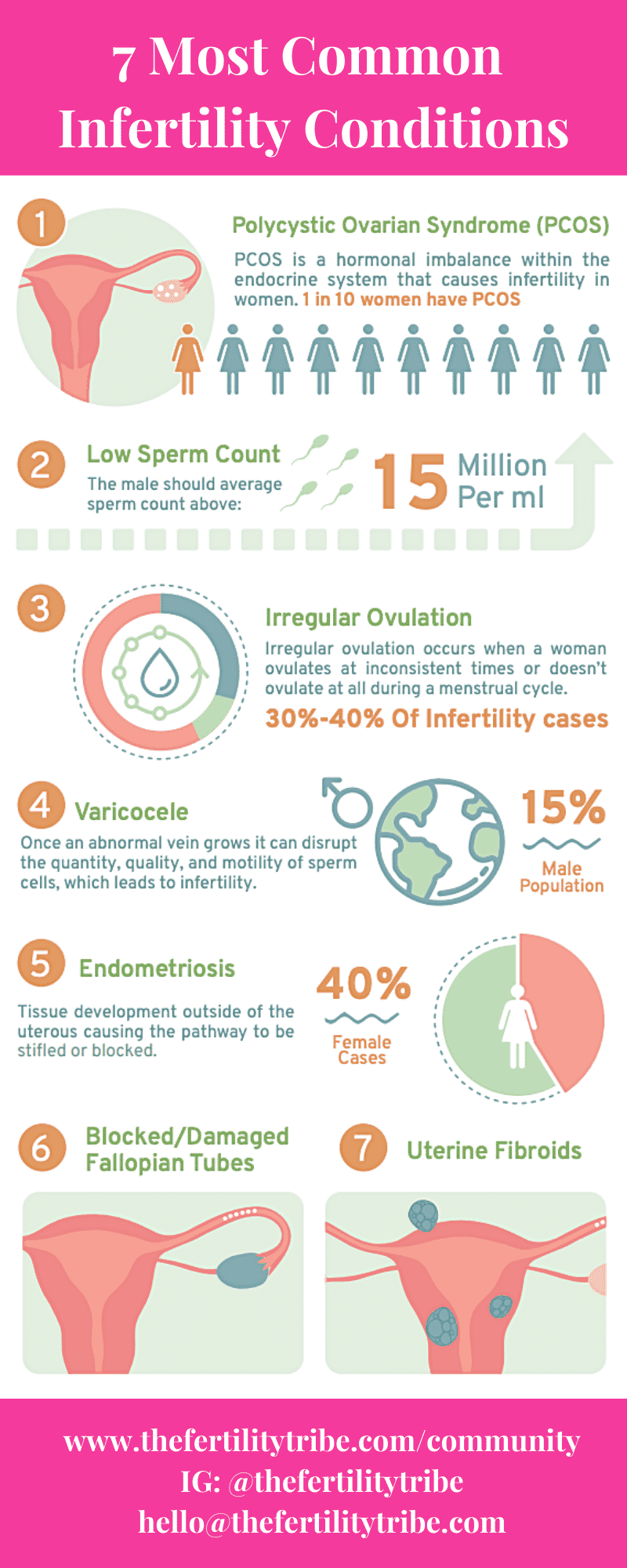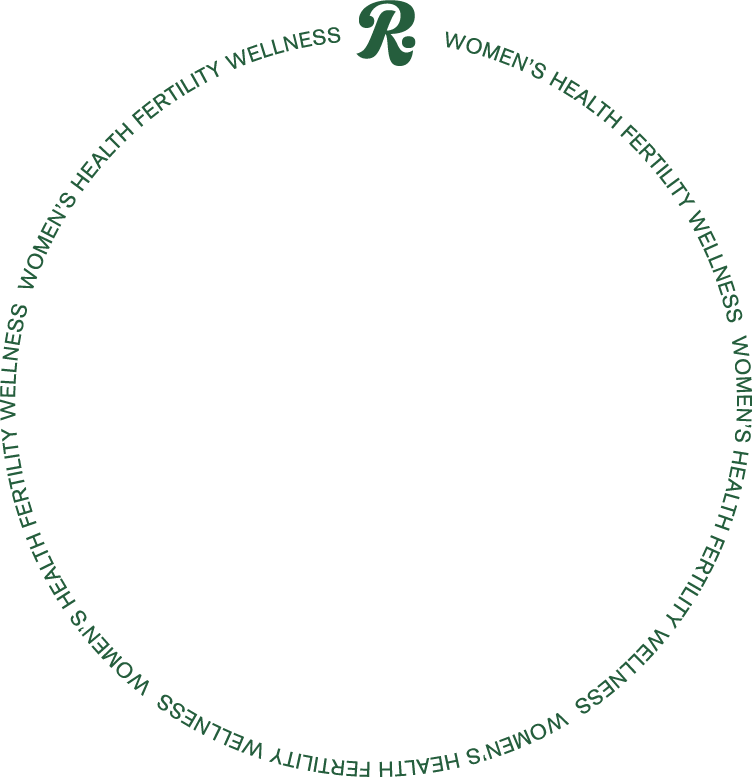Infertility affects 1 out of 8 couples in the U.S. alone. Roughly 10% of men and women face infertility challenges based on separate factors.
Below are 7 of the most common infertility conditions for men and women. After reading through each definition, go through the checklist and mark which symptoms you notice in your own body.
For women, the most common reason for infertility comes from hormone imbalances that disrupt normal ovulation patterns. The same hormone fluctuations can negatively impact men, causing major issues with sperm production and quality.
Aside from hormonal issues, there are several other conditions that men and women can experience.
Once you’re finished, you’ll have an organized, centralized place where you can start to visualize specific infertility issues that you may be facing. Then, you can use this information to consult with a fertility specialist and come up with a plan to help you achieve a healthy pregnancy.
Keep in mind, information from this checklist should not be a substitute for professional medical advice, diagnosis, or treatment. It’s in your best interest to seek the advice of a fertility specialist or other qualified health provider with any questions you may have regarding a medical condition or any of the symptoms listed here.


Below is a list of possible infertility causes:
1. Polycystic Ovarian Syndrome (PCOS)
2. Oligospermia (Low Sperm Count)
3. Irregular Ovulation
4. Varicocele
5. Endometriosis
6. Blocked or Damaged Fallopian Tubes
7. Uterine Fibroids
1. Polycystic Ovarian Syndrome (PCOS)
PCOS is a hormonal imbalance within the endocrine system and one of the leading causes of infertility in women. It’s estimated that 1 out of every 10 women experience PCOS. Essentially, irregular hormone production and distribution throughout the body can disrupt menstrual periods, making it difficult to track ovulation cycles. Not to mention, egg development can suffer from PCOS, and many other physical symptoms can begin to surface.
2. Oligospermia (Low Sperm Count)
Commonly referred to as having a low sperm count, oligospermia is the medical term used to represent this common male fertility issue. Men who experience oligospermia typically exhibit normal sexual activity, such as having and maintaining erections and being able to ejaculate at a climax. However, the amount of sperm that is carried out through the semen is relatively low.
It’s estimated that a male should have an average sperm count above 15 million sperm per milliliter. Rates lower than this benchmark can result in difficulty to conceive. Pinpointing the exact cause of oligospermia can be tough, but certain lifestyle factors and reproductive health issues are usually to blame.
3. Irregular Ovulation
Irregular ovulation (anovulation or oligo ovulation) occurs when a woman ovulates at inconsistent times or doesn’t ovulate at all during a menstrual cycle. For a healthy pregnancy to be achieved, the ovaries must release an egg that can be fertilized by sperm at a specific time, so if the ovulation process is compromised at any point, you can imagine how difficult it would be to conceive.
Irregular ovulation accounts for 30-40% of female infertility cases, and PCOS is often the main cause of its presence. In addition, several lifestyle factors and hormonal dysfunctions can also lead to its onset. These causes may include being overweight or underweight, over-exercising, having a thyroid disorder, experiencing severe stress, or showing signs of premature ovarian failure.
Whatever the case may be, if you are experiencing any of the symptoms below, please check each one that applies.
4. Varicocele
Men who experience oligospermia may also encounter a fertility issue known as varicocele. Within the testicles, there are many arteries and veins that help the reproductive glands function. Over time, a vein may start to develop abnormally, causing it to swell or enlarge. Once the abnormal growth takes place, it can disrupt the quantity, quality, and motility of sperm cells, which leads to infertility.
Varicocele is one of the most common causes of male infertility, affecting 15% of the male population worldwide. Although the exact cause of varicocele is unknown, identifying its presence and alleviating it can lead to major fertility improvements.
5. Endometriosis
Women who experience endometriosis will develop tissue (endometrium) on the outside of their uterus, rather than on the inside—where it’s supposed to form. Pain is often associated with this disorder, and the abnormal growth can affect the ovaries, the fallopian tubes, and pelvic tissues.
The reason why endometriosis causes infertility is that the tissue growth on the outside of the uterus continues to behave in the same way as it would inside the uterus. The lining thickens and breaks down with each menstrual cycle, which causes bleeding to occur, along with the formation of scar tissue surrounding the reproductive organs. Over time, this repetitive sequence can lead to constant discomfort and severe pain.
6. Blocked/Damaged Fallopian Tubes
A mature egg within the ovaries must be transferred to the uterus through a fallopian tube (on either side) in order for a pregnancy to occur. However, if that pathway is stifled or blocked, infertility can develop as a result. In addition to irregular ovulation, blocked/damaged fallopian tubes make up 40% of infertility cases among women.
Unfortunately, there are hardly any symptoms that can notify the body of such an obstruction. Most women will conclude that as long as their periods remain consistent, an issue with fertility doesn’t exist, but this way of thinking can lead to other issues. With this in mind, certain types of blockages (hydrosalpinx) can cause identifiable symptoms if you’re aware of them.
7. Uterine Fibroids
Initially, uterine fibroids are sometimes seen as representative of other health concerns, but these growths are noncancerous in nature, and will typically never develop into such a form. On the other hand, the presence of uterine fibroids can influence the odds of getting pregnant or the success of maintaining a healthy pregnancy.
Certain factors, such as race, genetics, environmental causes, and hormone production are believed to have a strong influence on the growth of fibroids. Once they begin to grow, they have the ability to disrupt menstrual cycles, take up significant space within the uterus and cause infertility.
Although they can produce serious issues, it’s important to remember that uterine fibroids are typically not an immediate threat. Nonetheless, if you are experiencing any of the symptoms below, check each one that applies. Discuss the possibility of uterine fibroids with your doctor and seek treatment if you experience multiple symptoms.



.jpeg)

.jpeg)

















